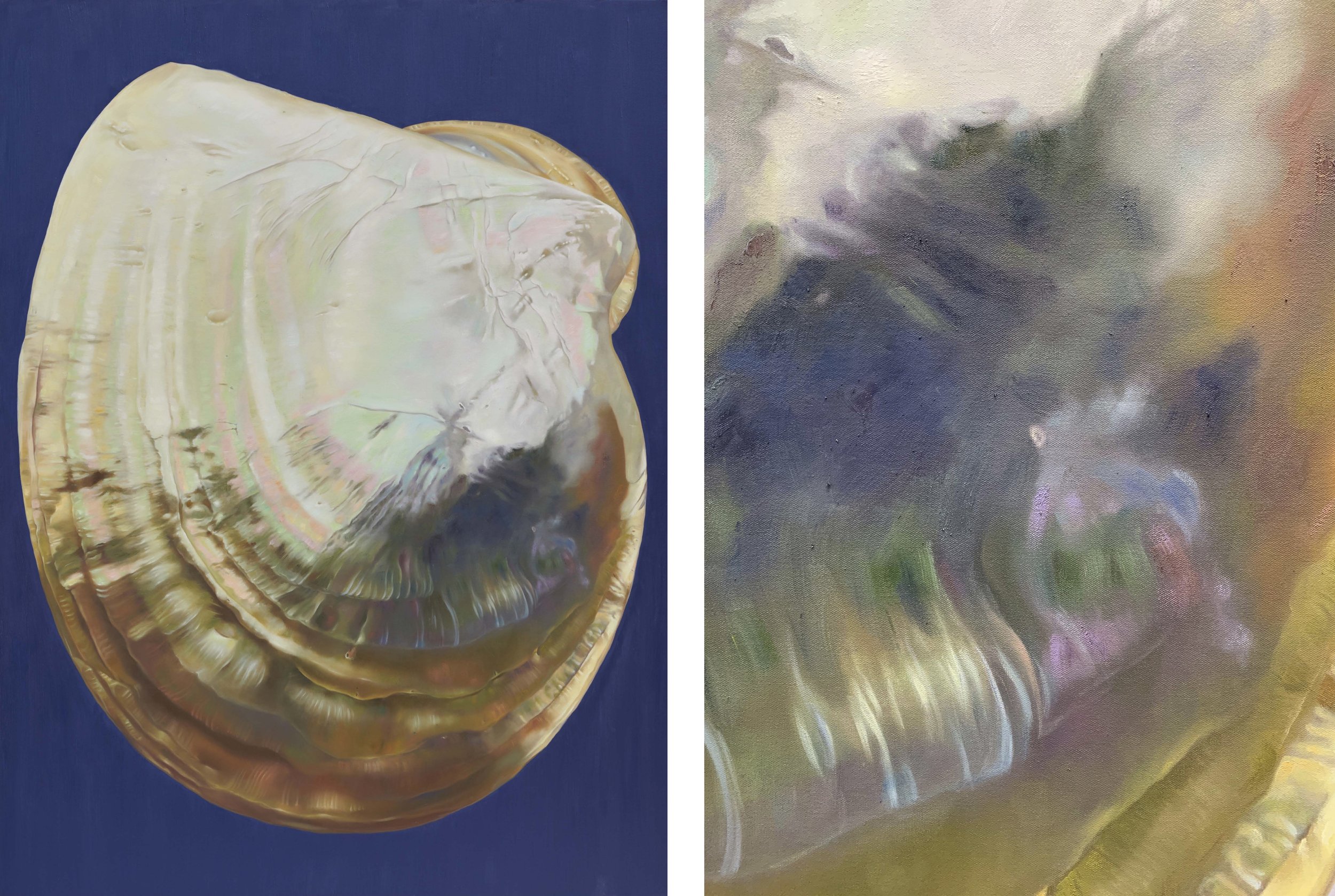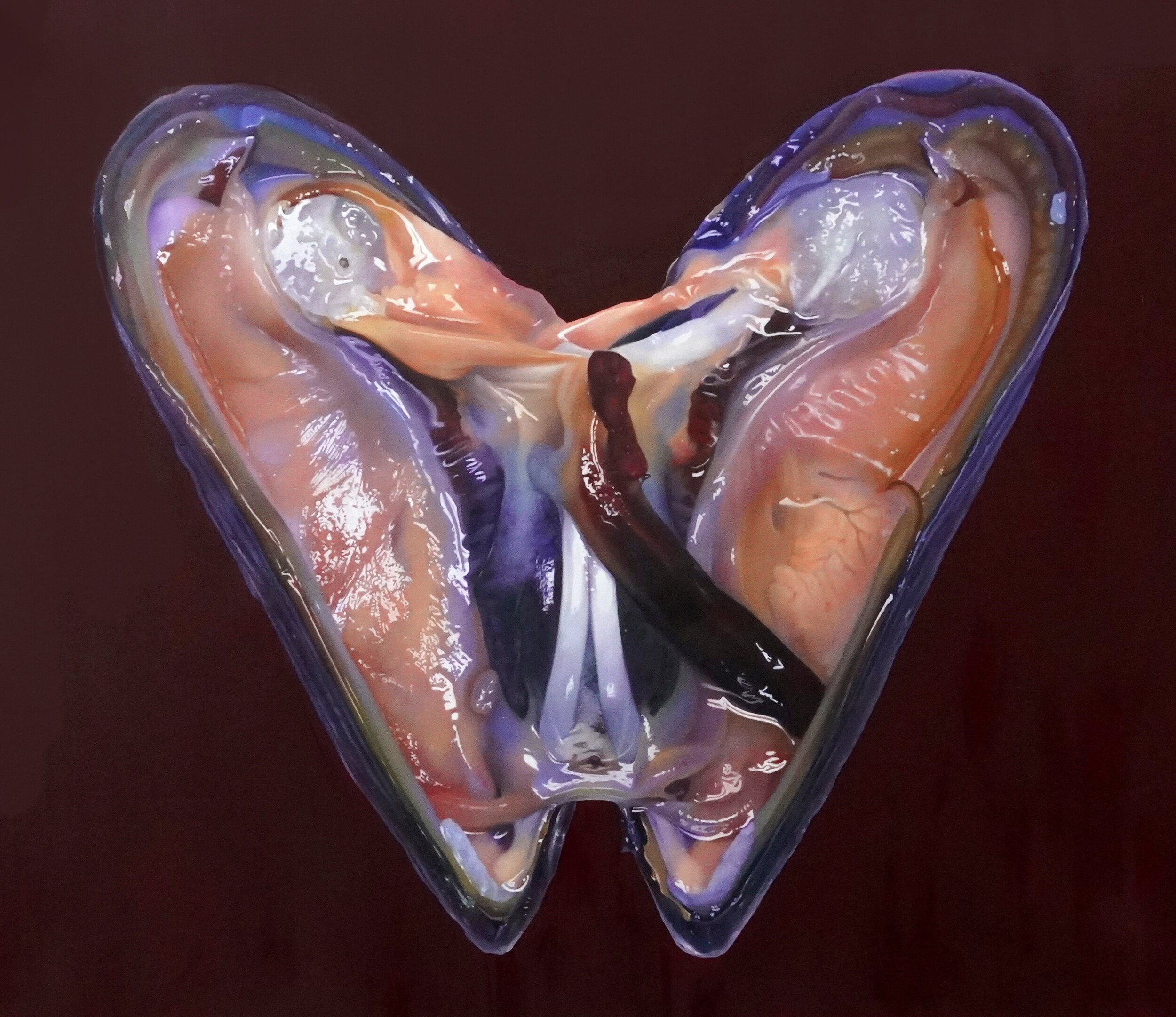Burn, Gleam, Shine
Hong Kong 2023 Galerie Marguo in collaboration with K11 Musea solo exhibition
The World is Your Oyster 2020-2023
Working across painting, photography, video, sculpture, and installation, Fawn Rogers’ practice explores the fraught relationship between human nature and the unbuilt world, with its many contradictions and cognitive dissonances. How to reconcile the fact that the human’s role in the entire scope of Earth's existence “is both hilariously small and frighteningly disastrous?” Her constellatory bodies of work, while playful and humorous, explore the convergence of eroticism and extinction in the anthropocentric era.
Historically, systems of dominance have been achieved through the construction of binary oppositions that favor the oppressor - man/woman, mind/body, white/other and so on. Rogers’ practice, by contrast, situates itself precisely within the tension between these binaries; the / between words providing the trellis upon which her ideas and expression take root and expand. Echoing Carl Jung’s sentiment that only the paradox could come close to comprehending the fullness of life, Rogers is drawn to universal objects, materials, and symbols – such as nails, soil, cars, seashells or teeth – that exist on the threshold of multiple, contradictory meanings. She collects these symbols, using them as footholds to formally and viscerally engage with the hyperobjects1 of our present reality.
Burn, Gleam, Shine engages with the iconography of the oyster and its loaded, dichotomous connotations of the sacred and profane: a symbol of chastity, fertility, and sacred knowledge, as well as carnal pleasure, decadence and greed. Even the precious pearl, harvested and cultivated for millennia, is the result of an irritant, a corruption of the oyster's pith. Shellfish are dirty – bottom feeders capable of individually filtering 150 liters of water a day – yet prized for their delicacy. And while the oyster embodies all these dualities and tensions, it also destabilizes them completely. For all their associations with the female sexual form, oysters are in fact hermaphroditic, beginning as males and developing into females throughout their life cycle.
Extending from The World is Your Oyster series, these new and recent paintings explore the potent image of the oyster as both a symbol of unbridled sexuality and ecological exhaustion. They feature larger than life sea creatures luridly splayed open, flaunting the nacreous sheen of their inner shells and drawing the eye across the wet crevices of their fleshy folds. Rendered against vivid monochromatic backdrops, they visually echo Barkley L. Hendricks’ liberatory, politically charged portraits from the 1960s, while calling to mind more recent works such as Mika Rottenberg’s NoNoseKnows (2015), an absurdist, feminist critique of the exploitative system that extracts wealth from natural resources and laboring bodies, partially set in a Chinese pearl-making facility.
These portraits, while celebratory, also strike a lamenting, existential tone. Their beauty does not diminish the violence of what they depict: lifeforms culled, slain, for the sake of capital and consumption. This wistful sense of a fait accompli, what the poet Joelle McSweeney calls the “necropastoral2”, is underscored by the paintings’ titles, several of which derive from The Bureau of Linguistic Reality, a lexicon of “new vocabulary for the Anthropocene.” Consider Jestope, “an attitude of hope mixed with clear eyed honesty”, related to the role of the Jester in the King’s Court, or Speciagua, “the realization that the eternal planet will end within a conceivable timeframe; the selfish desire to enjoy the present while we still can.”
Also on view are a suite of more intimately scaled paintings collectively presented as Love Letters to Costanza. Featuring cosmic scenes and shellfish embedded with ethereal figures in hallucinatory, fluorescent palettes, they echo the molluskan forms found in Burn, Gleam, Shine. These love letters, and Rogers’ interest in representations of female sexuality more generally, bridge the oyster works and her publication GODDOG, a multimedia research project tracing the palimpsestic figure of the Venus across history, through which she discovered the 17th century Italian noblewoman and art dealer Costanza Bonarelli.
Born to a poor but important Sienese family, Bonarelli was married to a studio assistant of Gianlorenzo Bernini. At the age of 22, she became the lover of the famous artist, whose bust of Bonarelli constitutes one of the rare personal works ever made by the artist. In a fit of jealousy, Bernini had her face slashed – a crime typically reserved for courtesans. At the trial, Constanza was indeed labeled a courtesan and banished to a monastery, while Bernini was simply fined and instructed to marry. With this series, Rogers imagines Bonarelli, cast as the patron saint of Patriarchy’s unjust hypocrisies, up in the cosmos, illuminated by the brilliant colors of each little comet, or love letter, dispatched by the artist on behalf of History’s unfairly exploited, blamed, and punished.
Melanie Scheiner, Galerie Marguo


























